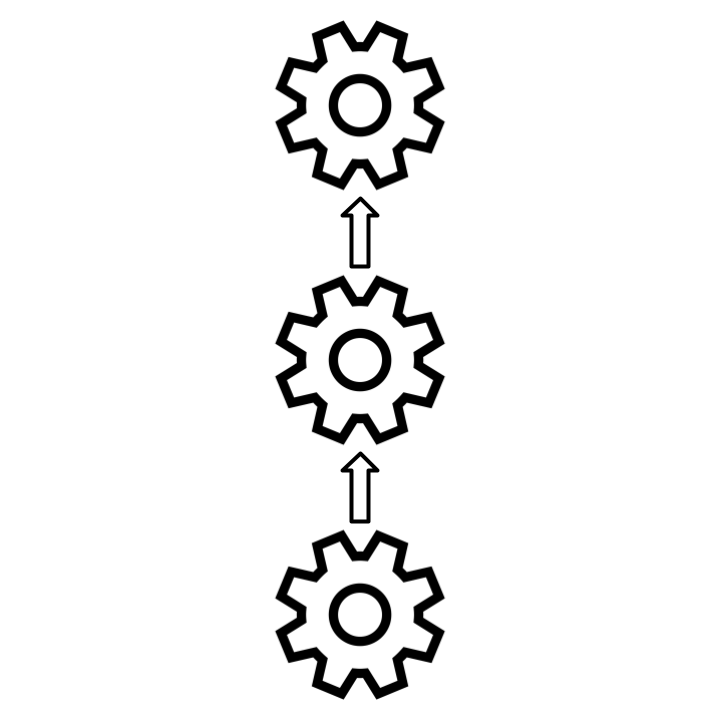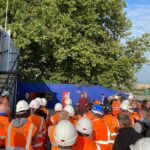TECHNOLOGY IS DISRUPTING THE CONSTRUCTION SUPPLY CHAIN. This is changing where cost, risk and value are positioned. How companies engage with each other and find services throughout the ecosystem is also evolving because of technology.
The construction supply chain was already under pressure from Brexit and the outbreak of Covid-19. With news last week that the UK is officially in recession, the industry is being hit with even more pressure. Alongside these historical events, the digital transformation of the construction industry and the wider built environment is accelerating.
Before I talk about “how” the construction supply chain is likely to be disrupted, I want to clarify, here I am talking about subcontractors and suppliers that typically work for Tier 1 contractors. These are typically reinforced concrete frame contractors, pilers, utilities, facades, material suppliers and so on.
The boys and girls that do all the “real” work on site are the ones that form the backbone of the construction industry, employing millions of people.
I think it’s safe to say that the supply chain is going to be, and is in the processes of being disrupted. Some companies will not survive the next few months, with some casualties already being seen. Others will survive, and a handful will thrive. There are some simple questions: will contractors repeat history and start slashing bid costs? Will supply chains become more or less sustainable?
Only time will tell.
Nobody can tell the future but I really believe that the adoption of technology is going to play a massive role in shaping the supply chain. In addition to the pressures of Brexit, Covid-19 and the recession, technology and business model innovation as a result of adopting new technologies are going to have massive impacts. There are many technologies and innovations that are already having an impact such as 5G, IoT, AR, and digital twins, but I am going to focus on three technologies.

Making business decisions based on rigorous data analysis is slowly becoming the norm. For a lot of companies that’s not been the case, but It’s going to become a lot easier for them to collect data and analyse it, no matter their size. The more data-driven companies become, the quicker they are going to accelerate past their competition and possibly even their current clients. Ideally, data-driven decisions are free-from human biases and opinions. This will have profound impacts on how the supply chain works with main contractors and other suppliers.
Let’s think about the use of data when it comes to sub-contract payments. The supply chain is going to become really interesting when real-time data from construction sites is used to authorise payments. Consider what happens if a subcontractor pours concrete on site: why shouldn’t they be immediately paid for it? The work is done, right? We have the technology right now to measure, check and inspect it, but at present they have to make an application for payment at the end of the month, getting paid 30 days later if they are lucky. This could change very rapidly due to the combination of real-time data capture using cameras and Machine Learning. There are numerous start-ups such as Buildots and Evercam using cameras to capture data from sites. At the moment I believe this information is currently used to monitor quality and progress respectively, but processed in the right way; this data could also be used to form the basis of a payment authorization (yes that is right, skip the application)?
Think about it, the work is checked using the cameras better than any human could, it makes sense!
Authorising a payment based on data from a camera will cost less than conventional methods, and will be quicker and more accurate. What impact will this have on the cash flow of the supply chain and Tier 1 contractors?

Vertical integration is taking hold, especially in the residential sector. The government is increasing support for modular homes. New partnerships are emerging. Manufacturers are taking on the role of contractors and property developers and property developers are trying their hand at being manufacturers. There are numerous examples of vertical integration, and this happening throughout the world. This trend is going to steadily increase. What’s going to happen to all of the companies and people working in the traditional supply chain? Are they going to suddenly pivot into vertically integrated, technology enabled organisations? What will the residential development market look like in 10 years? What does this mean for the supply chain? Will the cost of constructing a house be driven by capacity in a factory or availability of skilled labour? One thing is for sure, neither will impact the cost of buying a home, but quality and sustainability should increase, and the ongoing cost of homeownership will hopefully decrease.
Project Etopia is a good example of the future of the housing supply chain. They are a vertically integrated housing provider with technology and sustainability at the core of their business. Purchasers of Project Etopia homes are buying some of the most sustainable homes in the world. This demonstrates the potential of the combination of vertical integration, technology and a commitment to reversing climate change. It should be noted that most companies are just committed to not making the current situation worse.


For this example I will split automation into two parts:
- Automation of process implementation.
- Automated vehicles.
Realistically, with the technology available these days, neither driving a construction vehicle or implementing a QA process on site need a human to make decisions. In the previous paragraph, I talked about automating payments based on data from cameras. Managing construction sites is all about implementing a set of processes and procedures. All of which can be digitised, but how much can be automated? Why can’t instructions be automatically issued? This could be based on a simple comparison between a digital twin and camera data from the real world.
The second part of automation is to do with vehicles, which actually no longer require humans to drive them. Built Robotics is leading the future of driverless vehicles on sites. With driverless vehicles comes job losses, but actually there is another level to this: Robots/autonomous machines, aerial drones and Autonomous Animals such as Spot from Boston Dynamics will become ubiquitous on sites. They will work alongside humans performing tasks on site, but they are also going to radically change workflows, not just replacing some jobs.
Consider for a minute that Spot becomes the new Clerk of Works, he (or she) will be able to check works, compare drawings and issue reports in real-time. He could also authorise payments.
If the supply chain embraces technology and becomes digital businesses, early and committed adopters will thrive. It’s going to be an uncomfortable process for everyone but through a combination of: ambitious goals, technology adoption, cash and commitments. Supply chain organisations are going to become a lot stronger, more dynamic and change our industry.
SHARE THIS ARTICLE
RECENT POSTS
-
 Network Effects: The Answer to Digital Skepticism in Construction?November 22, 2022/0 Comments
Network Effects: The Answer to Digital Skepticism in Construction?November 22, 2022/0 Comments -
 Facial Recognition in the Built EnvironmentAugust 16, 2020/
Facial Recognition in the Built EnvironmentAugust 16, 2020/ -
 A Skills Gap Or Just a Lack of Communication?December 11, 2019/
A Skills Gap Or Just a Lack of Communication?December 11, 2019/





